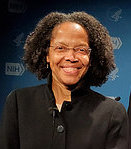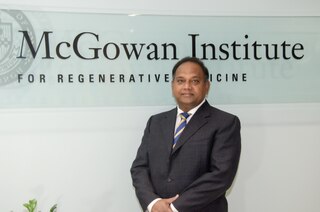Related Research Articles

Purdue University is a public land-grant research university in West Lafayette,Indiana,and the flagship campus of the Purdue University system. The university was founded in 1869 after Lafayette businessman John Purdue donated land and money to establish a college of science,technology,and agriculture;the first classes were held on September 16,1874.

The Indiana University School of Medicine (IUSM) is a major,multi-campus medical school located throughout the U.S. state of Indiana and is the graduate medical school of Indiana University. There are nine campuses throughout the state;the principal research,educational,and medical center is located on the Indiana University–Purdue University Indianapolis (IUPUI) campus in Indianapolis. With 1,461 MD students,195 PhD students,and 1,442 residents and fellows in the 2023–24 academic year,IUSM is the largest medical school in the United States. The school offers many joint degree programs including an MD/PhD Medical Scientist Training Program. It has partnerships with Purdue University's Weldon School of Biomedical Engineering,other Indiana University system schools,and various in-state external institutions. It is the medical school with the largest number of graduates licensed in the United States per a 2018 Federation of State Medical Boards survey with 11,828 licensed physicians.

WBAA and WBAA-FM (101.3 FM) are jointly operated non-commercial educational radio stations licensed to West Lafayette,Indiana,United States,both serving the Lafayette metro area and the Indianapolis area with public radio formats. The stations were founded by Purdue University,but in 2022,100 years after WBAA's start,ownership was transferred to Metropolitan Indianapolis Public Media,Inc. (MIPM),which also owns WFYI radio and television in Indianapolis. Both stations originate from studios in the Edward C. Elliott Hall of Music on the Purdue campus,with transmitter sites south of Lafayette at the Throckmorton Purdue Agricultural Center.

The Weldon School of Biomedical Engineering is Purdue University's school of biomedical engineering. The school offers undergraduate,graduate,and doctoral degrees. It is in a partnership with the Indiana University School of Medicine and offers a Doctor of Medicine–Master of Science in Biomedical Engineering combined degree program with that school.

The Purdue University College of Engineering is the engineering school and one of eight major academic divisions of Purdue University,a public research university in West Lafayette,Indiana. Established in 2004,its forerunner began in 1874 with programs in Civil and Mechanical Engineering.

Ei-ichi Negishi was a Japanese chemist who was best known for his discovery of the Negishi coupling. He spent most of his career at Purdue University in the United States,where he was the Herbert C. Brown Distinguished Professor and the director of the Negishi-Brown Institute. He was awarded the 2010 Nobel Prize in Chemistry "for palladium catalyzed cross couplings in organic synthesis" jointly with Richard F. Heck and Akira Suzuki.
Treena Livingston Arinzeh is an American biomedical engineer and academic.

Christine P. Hendon is an electrical engineer and computer scientist and an associate professor in the Department of Electrical Engineering at Columbia University in New York City. Hendon is a pioneer in medical imaging. She develops biomedical optics technologies,using optical coherence tomography and near infrared spectroscopy systems,that enable physicians to perform guided interventional procedures and allow for structure-function dissection of human tissues and organs. Her advances in imaging technologies have led to improved diagnostic abilities and treatments for cardiac arrhythmias as well as breast cancer and preterm birth. She has been recognized for her development of optical imaging catheters for cardiac wall imaging by Forbes 30 under 30,the MIT Technology Review’s 35 Innovators Under 35,and by President Obama with the Presidential Early Career Awards in 2017.

Gilda A. Barabino is the president of the Olin College of Engineering,where she is also a professor of biomedical and chemical engineering. Previously,she served as the dean of The Grove School of Engineering at the City College of New York,and as a professor in the Departments of Biomedical Engineering and Chemical Engineering and the CUNY School of Medicine. On March 4,2021,she became the President-Elect of the American Association for the Advancement of Science.
George R. Wodicka is an American biomedical engineering educator,researcher,inventor,entrepreneur,and academic administrator. He is the Vincent P. Reilly Professor of Biomedical Engineering and was the Dane A. Miller Founding Head of the Weldon School of Biomedical Engineering at Purdue University. His research and entrepreneurship focuses on the application of acoustic technologies to improve child health.

Chandan K. Sen is an Indian-American scientist who is known for contributions to the fields of regenerative medicine and wound care. He is currently the Director of the McGowan Institute for Regenerative Medicine of the University of Pittsburgh. He is a University Endowed Professor of Surgery who also serves as the Chief Scientific Officer of wound care services of the University of Pittsburgh Medical Center health system. At the University of Pittsburgh,Professor Sen serves as Associate Vice Chancellor for Life Sciences Innovation and Commercialization.
Irene Georgakoudi is a Greek biophysicist and Professor of Biomedical Engineering at Tufts University,where her work focuses on developing non-invasive medical imaging techniques based on optical spectroscopy for applications in medical diagnostics and therapeutics.
Sally Elaine McRorie is an American psychologist and painter. She is the provost and executive vice president for academic affairs at Florida State University and president of the National Association of Schools of Art and Design.

Jennifer Lynn Sinclair Curtis is an American engineer. She was the Dean of the University of California,Davis' College of Engineering from 2015 until 2020 and a Fellow of the American Association for the Advancement of Science,American Institute of Chemical Engineers,American Society for Engineering Education,and American Physical Society.
Helen Haiyan Lu is a Chinese American biomedical engineer and the Percy K. and Vida L. W. Hudson professor of biomedical engineering at the Columbia University Fu Foundation School of Engineering and Applied Science. Her work focuses on understanding and developing therapies in complex tissue systems,especially the interface between soft tissue and bone.
Alyssa Panitch is an American biomedical engineer. She is a Professor and Department Chair in the Wallace H. Coulter Department of Biomedical Engineering at Georgia Tech and Emory University. Panitch focuses on designing biopolymers that improve tissue healing and regeneration by researching intracellular and extracellular approaches to direct molecular and cellular processes.
Melissa Ann Grunlan is an American scientist and academic. She is Professor and Holder of the Charles H. and Bettye Barclay Professorship in the Department of Biomedical Engineering at Texas A&M University. She holds courtesy appointments in the Departments of Chemistry and Materials Science &Engineering. Her research focuses on the development of polymeric biomaterials for regenerative engineering and medical devices.
Pavlos P. Vlachos is a Greek-American engineer,scientist,academic,and entrepreneur. He is professor in Purdue’s School of Mechanical Engineering and in the Weldon School of Biomedical Engineering,and the St. Vincent Health Professor of Healthcare Engineering. He serves as the Director for the Purdue Regenstrief Center for Healthcare Engineering (RCHE).

J. Paul Robinson is an Australian/American educator,biologist,biomedical engineer,and expert in the applications of flow cytometry. He is a Distinguished Professor of Cytometry in the Purdue University College of Veterinary Medicine,Department of Basic Medical Sciences,a professor of Biomedical Engineering in the Weldon School of Biomedical Engineering,a professor of Computer and Information Management at Purdue University,an adjunct professor of Microbiology &Immunology at West Lafayette Center for Medical Education,Indiana University School of Medicine,and the Director of Purdue University Cytometry Laboratories.
Claudia Fischbach is a German bioengineer who is the Stanley Bryer 1946 Professor of Biomedical Engineering at Cornell University. She is Director of the Cornell Physical Sciences Oncology Center on the Physics of Cancer Metabolism.
References
- ↑ "Central senior wins in state writing contest". Muncie Evening Press. May 26, 1983. Retrieved March 21, 2021– via newspapers.com.
- ↑ "24 high school seniors receive Storer Scholarships". Muncie Evening Press. April 4, 1983. Retrieved March 21, 2021– via newspapers.com.
- ↑ "Faculty Profile: Sherry Voytik-Harbin". engineering.purdue.edu. Retrieved March 23, 2021.
- ↑ "Doctoral student wins $500 scholarship". Journal and Courier. December 28, 1990. Retrieved March 21, 2021– via newspapers.com.
- ↑ "Benefits". Indianapolis, Indiana: The Indianapolis Star. November 23, 2003. Retrieved March 24, 2021– via newspapers.com.
- ↑ "Professor Sherry Voytik-Harbin Promoted". engineering.purdue.edu. June 12, 2006. Retrieved March 24, 2021.
- ↑ "Campus notebook". Journal and Courier. October 5, 2008. Retrieved March 24, 2021– via newspapers.com.
- ↑ "Half dozen faculty members promoted to full professor". engineering.purdue.edu. Fall 2015. Retrieved March 24, 2021.
- ↑ "3 Purdue professors elected as fellows of National Academy of Inventors". purdue.edu. December 15, 2015. Retrieved March 24, 2021.
- ↑ "Harbin named University Faculty Scholar". engineering.purdue.edu. 2016. Retrieved March 24, 2021.
- ↑ "Sherry Harbin elected to AIMBE College of Fellows". engineering.purdue.edu. 2020. Retrieved March 23, 2021.
- ↑ "Tissue-engineered implants provide new hope for vocal injuries". purdue.edu. February 23, 2021. Retrieved March 23, 2021.
- ↑ "Marriage Licenses". Journal and Courier. October 27, 1994. Retrieved March 21, 2021– via newspapers.com.